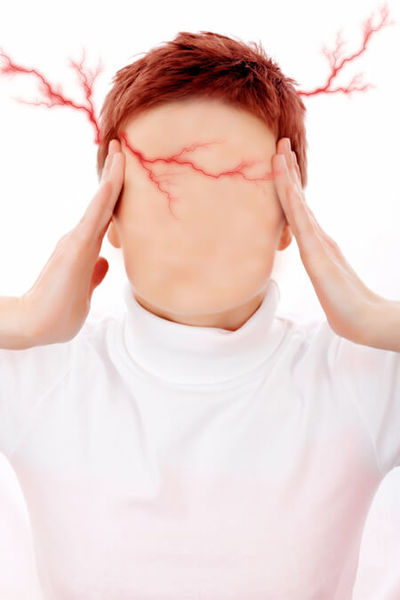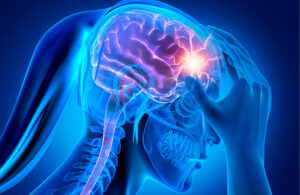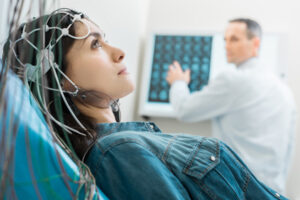Press "Enter" to skip to content

• 1 in 5 women, and 1 in 15 men suffer from migraine. Making it 3 times more common condition for women.
• 50% cases go undiagnosed and untreated.
• Biofeedback has shown to reduce intensity of migraines by up to 60%
How many helpless days have gone by when all you could do was wish for that dreaded headache to stop? Or worse, felt like banging your head onto the wall? Innumerable google searches to find a cure for your migraine?
Headache is the most common type of pain. Out of the several hundred types of headaches, most people know about the most common 4 types-sinus, tension, migraine and cluster headache. Migraine amongst its peer is considered as the most worrisome one.

For many decades, migraine was considered as a problem with no known cause as well as treatment options. Thankfully, tables have turned and researches have put on some light on these previously unaddressed issues. Google defines migraine as a recurrent throbbing type of headache that typically affects one side of the head and is usually associated with nausea and disturbed vision. Most migraine sufferers know about “migraine aura”, and for those who don’t, auras are preceding signals or signs from the body which is most likely followed by a migraine attack. For example, one could see flashing of light, experience severe nausea and sometimes a seizure attack is also an aura.
While the sufferers of the silent condition almost gave up on a remedy, recent advancement would be the biofeedback therapy. It has proven to reduce intense migraine attacks and also to reduce the frequency of the attacks by 45-60%. So, what exactly is biofeedback?
The principle of bio feedback is to monitor your body parameters and use different techniques to bring your body and brain back in a relaxed state. Electrodes are used to monitor the heart rate, blood pressure, brain waves, breathing, skin sweat and muscle tension. These body reactions change with your stress levels. During biofeedback sessions, with the help of a trained therapist and with the appropriate equipment, you will learn to listen to your body responses and then react in a way that relaxes you. Biofeedback is thus a non-invasive mind body technique.
Biofeedback devices may be hooked up to a wired monitor or come in the form of a wearable device. The connected electrodes collect information about your body’s unconscious or involuntary responses to stress and measure it. This feedback can then help determine reactions to consciously soothe your behaviors to help bring your body and mind back to a relaxed state. Besides migraine, biofeedback is used for other pain and stress-related conditions like ADHD, fibromyalgia, stroke, and high blood pressure.
 Another type of biofeedback is thermal or hand-warming therapy. When under stress, the blood vessels naturally contract, resulting in cold hands and feet and clammy palms and soles. Thermal biofeedback helps one to identify these thermal changes and, in a way, help make conscious efforts to regulate temperature. Proper thermal regulation when in stress can either avoid a migraine attack or decrease the intensity.
Another type of biofeedback is thermal or hand-warming therapy. When under stress, the blood vessels naturally contract, resulting in cold hands and feet and clammy palms and soles. Thermal biofeedback helps one to identify these thermal changes and, in a way, help make conscious efforts to regulate temperature. Proper thermal regulation when in stress can either avoid a migraine attack or decrease the intensity.
There are absolutely no known side effects of biofeedback therapy. Biofeedback being non invasive therapy further makes it safer for pregnant women as well. It can also make one feel more in control of their health as well as improve quality of life.
It is always recommended to consult your healthcare provider or a qualified therapist before you start your sessions.
-STAY HEALTHY
Dr. Aishwarya Nair
error: Content is protected !!

 Another type of biofeedback is thermal or hand-warming therapy. When under stress, the blood vessels naturally contract, resulting in cold hands and feet and clammy palms and soles. Thermal biofeedback helps one to identify these thermal changes and, in a way, help make conscious efforts to regulate temperature. Proper thermal regulation when in stress can either avoid a migraine attack or decrease the intensity.
Another type of biofeedback is thermal or hand-warming therapy. When under stress, the blood vessels naturally contract, resulting in cold hands and feet and clammy palms and soles. Thermal biofeedback helps one to identify these thermal changes and, in a way, help make conscious efforts to regulate temperature. Proper thermal regulation when in stress can either avoid a migraine attack or decrease the intensity.




